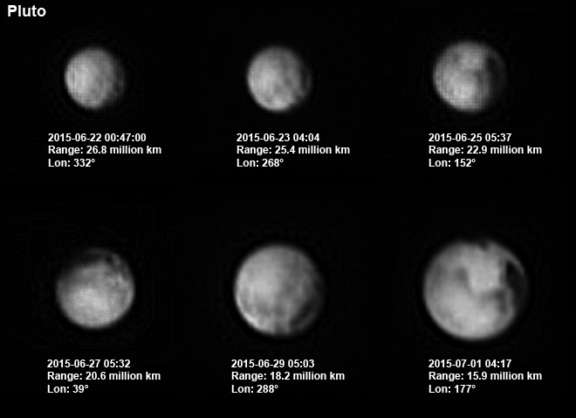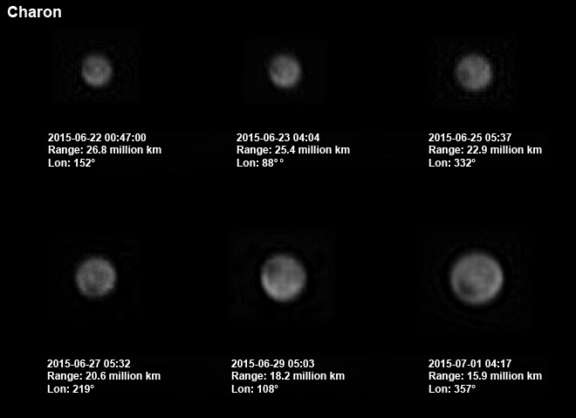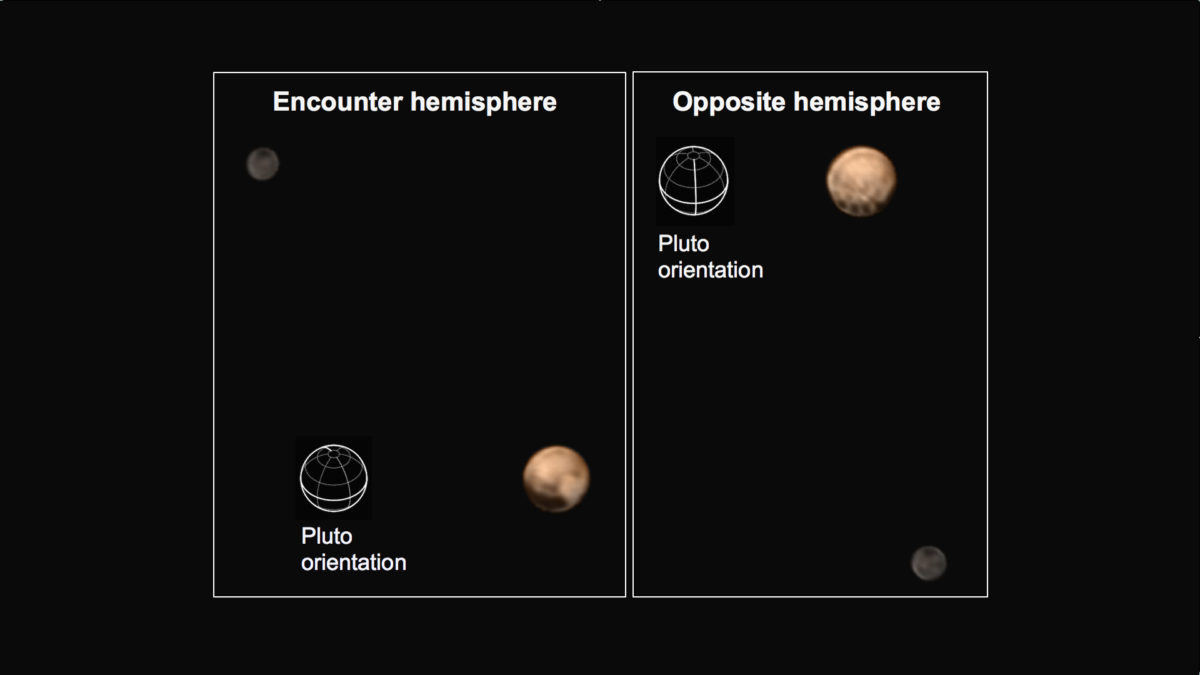Emily Lakdawalla • Jul 03, 2015
Pluto's progression: Third-to-last Pluto day before encounter
Only two days remain until New Horizons' historic encounter with Pluto....two Pluto days, that is. Pluto and Charon rotate together once every 6.4 days, so as New Horizons has approached the pair over the last week, we've been treated to one stately progression of all of their longitudes. Here, Björn Jónsson has collected and stacked a week's worth of images of Pluto and Charon:


There's enough detail now that my eye wants to make coherent shapes of the splotches on the surfaces. Anything round or ring shaped, my eye wants to turn into a crater; I have to remind myself that with Pluto and Charon lit at nearly full phase, there's no hope of seeing shape from shading anywhere on these dots just yet. But if I tell my mind there's no craters here, my eye starts catching faces and animal shapes.
It's slightly better to look at what the New Horizons team has made from recent Ralph MVIC color in combination with high-quality, grayscale LORRI data: two distinctly different faces of the two round worlds we'll be passing in two weeks. What is that maddening series of dots on the Charon-facing hemisphere? Pluto looks like a bear's paw.

Among other worlds we've seen in the solar system so far, Pluto is reminding me most of Triton, with its brighter and darker patches. But we know already that Triton's is not as contrasty a surface as Pluto's. What makes Pluto's darks darker than Triton's? We'll have to wait and see!

I tuned in from vacation to watch last week's televised mission update. The most important news it contained was that after deep searches, the mission has discovered no new moons or rings. That means it's safe (as far as we can tell) for New Horizons to continue down its originally planned course past Pluto; it will traverse Pluto's potentially hazardous equatorial plane at a position opposite that of Charon. The mission is now commited to that course for good.
The next televised mission update is on Tuesday, July 7 at 8:30 PT / 11:30 ET / 15:30 UT; from that day forward, the mission updates will come daily. I'll be traveling to Maryland on July 8 in order to cover the mission from the Applied Physics Laboratory, the center for all things Pluto. Check my What to Expect post for a schedule of, well, what to expect for the week of encounter.
Two more Pluto days left!
Let’s Go Beyond The Horizon
Every success in space exploration is the result of the community of space enthusiasts, like you, who believe it is important. You can help usher in the next great era of space exploration with your gift today.
Donate Today

 Explore Worlds
Explore Worlds Find Life
Find Life Defend Earth
Defend Earth

